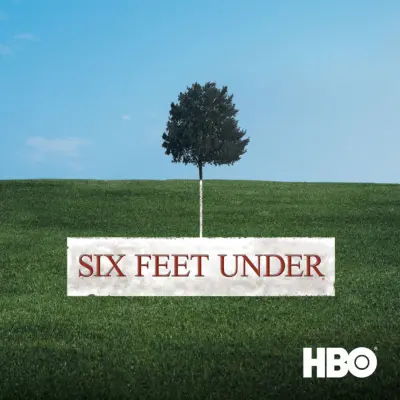Six Feet Under premiered 20 years ago today
-

Alan Ball's five-season HBO drama was unprecedented when it debuted on June 3, 2001. "Like most of us, television has always tended to shy away from death," says Louis Chilton. "Of course, it has featured on TV since the medium’s earliest days – as a storytelling device, a set-up for a mystery, a story twist or even a convenient means of explaining an actor’s departure. But for the better part of a century, TV skirted around the edges of death, avoiding the unknowable black hole at the heart of it. Perhaps the 20th century’s finest example was Twin Peaks, which shocked the world in 1990 with its raw, protracted look at the murder of a teenage girl, diving into a community’s grief without offering any easy or coherent answers. But in 2001, Six Feet Under blew all precedents away. When it comes to exploring death on-screen, there has never been a better, funnier, more humanistic example than Six Feet Under, first broadcast 20 years ago today. Of all the conservative media taboos that Alan Ball’s pioneering TV drama would flout – and there were a lot of them, from meth-smoking schoolkids to gay threesomes to mass shootings – none was more challenging to the “feelgood” conventions of television than its candid, no-holds-barred treatment of death. Six Feet Under was a series that looked death square in the face, scrutinizing every mole and crevice." Ball says of Six Feet Under, which won nine Emmys and three Golden Globes: “I feel like what the show is about is pretty timeless. There had never really been a show like that, about that subject. About death.”
ALSO:
- Alan Ball recalls initially hating the idea for Six Feet Under's ending: "Certainly, the idea of killing everybody at the end of the show was not my own," he says. "And I remember I fought it, when I thought it was just like we were just being nihilistic in terms of like, 'Oh, whatever...' Because I think it was pitched as there was a nuclear strike in Los Angeles, and I was like, 'No, we're not going to do that.' But then once I realized, as we were talking about it around the table, that, no, we're just going to make a point of being with each of these characters at the moment when they stop living, I sort of went, 'Well, of course, how else could you end this show? That's the perfect way to end this show.'"
- Michael C. Hall expected Six Feet Under to be one of TV's memorable shows: “I’m not … like a super shiny happy optimistic person,” he says. “By that I mean I don’t think I feel that way generally about everything I’m involved with. ... It wasn’t just intuition, it was based on the script and what I felt like we were making, that this could be something special.”
- Read Entertainment Weekly's Six Feet Under oral history
- Read Rolling Stone's Six Feet Under oral history from 2015
TOPICS: Six Feet Under, HBO, Alan Ball, Michael C. Hall, Retro TV
More Six Feet Under on Primetimer:- HBO Has Perfected the Art of Sibling Rivalry
- HBO boss isn't interested in reviving True Blood or Six Feet Under: "Believe it or not I don’t my spend time thinking about what shows to reboot"
- HBO is reportedly interested in reviving Six Feet Under
- Six Feet Under was never granted the same gravitas as The Sopranos, despite presenting a far more dynamic vision of what an American family could be
